For such a spectacular place, you don’t hear much about Italy’s Valle d’Aosta. Perhaps because competition in the neighborhood is so stiff: Mont Blanc is here, but much of the alpine infrastructure to enjoy it is on the French side of the border; the Matterhorn is here too, but it’s postcard-perfect, Toblerone side faces Zermatt in Switzerland; the Italian Lake District and even the distant peaks of Alto Adige offer a compelling alternative for tourists, too.
And when it comes to wine, the Nebbiolo-based wines of the Langhe and Alto Piemonte — as well as Piedmont’s greater panopoly of grapes — cast a very big shadow in these parts.
Yep, poor little Valle d’Aosta gets overlooked. You could assume it has to do with its “corner status,” or that it is seen as a mere pass-through en route to France. But our oversight is less complacent than that. Of Italy’s 20 regions, Valle d’Aosta is the smallest, the least populated and — most importantly for people like you and me — it produces the lowest volume of wine. Of what is made, not much of it leaves.
However, the quality of its exports is extraordinarily high and the idiosyncrasies of these wines makes each one an adventure. As a result, these wines are increasingly joining the conversation, and it turns out, they have a lot to say.
Valle d’Aosta 101
From a wine drinker’s perspective, the geography of Valle d’Aosta is simultaneously complex and simple. The topography is mostly vertical, as the Alps reach their apex on its northwestern border with France. From the Po River Valley to the summit of Mont Blanc some 66 miles away, the land rises 15,000 vertical feet. That’s a staggering aspect.
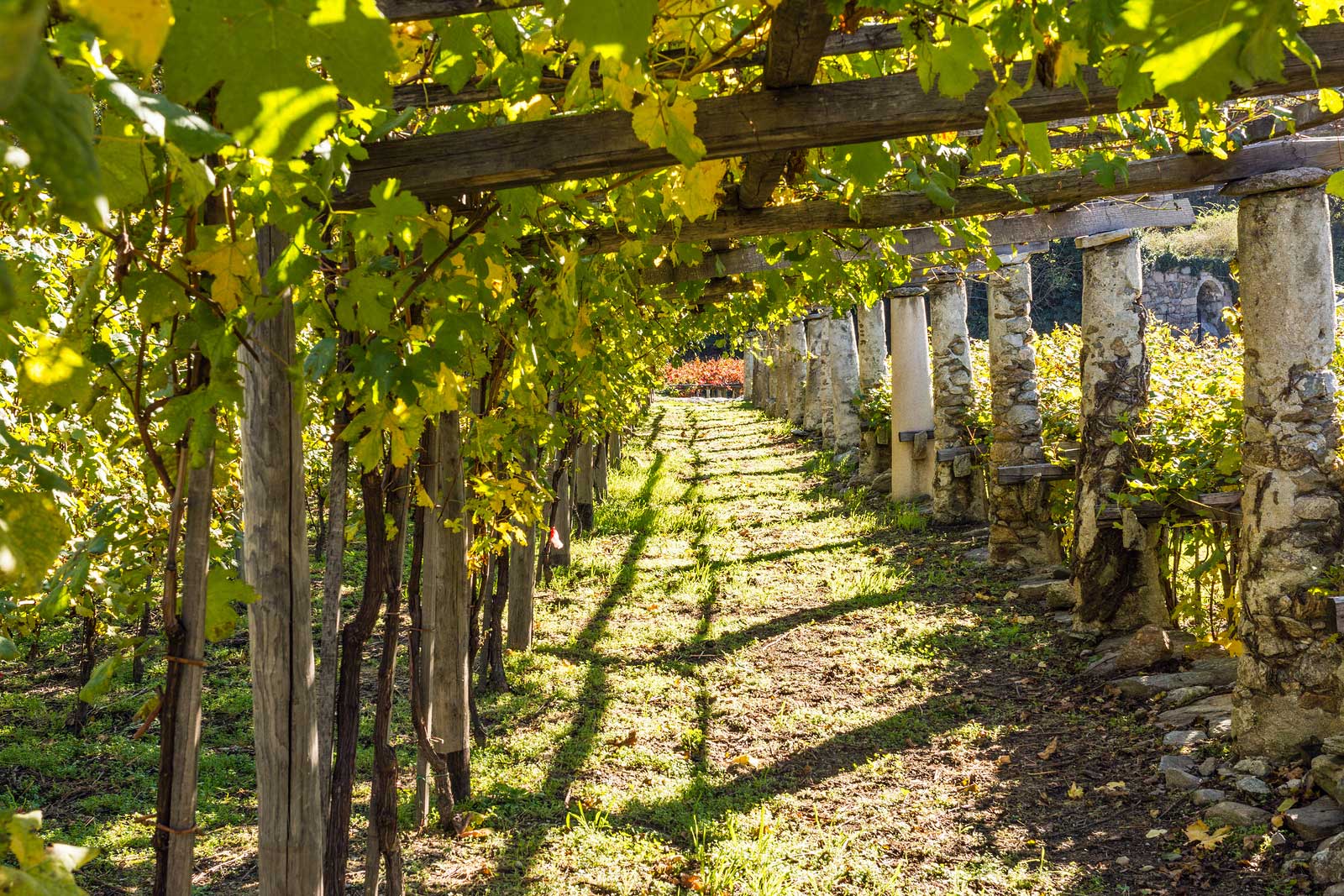
Running right through the heart of Valle d’Aosta is a single valley, forged by the Dora Baltea River. It is here where all of the grape growing is concentrated, primarily on south-facing slopes near the valley floor where the vineyards can absorb as much sunlight as possible. Because of the steep inclines, vineyards are predominantly terraced, making viticulture labor intensive.
The wines of Valle d’Aosta are mostly classified under the region’s single DOC, the Valle d’Aosta DOC. From there, subzones provide further definition. It would seem to me that several of these subzones warrant their own DOC status. In fact, Donnas, which has made its mark with Nebbiolo, used to be its own DOC. Tiny Enfer d’Arvier, too. But in 1985, the powers that be combined them all into a regional catch-all and defined what was left as subzones. Given today’s demands for authenticity and sense of place, you can’t help but wonder if the subzones are clambering for separation once again. Perhaps having “Valle d’Aosta” on the label — and its conjuring of frosty peaks — has enough of a coattail effect to keep things as they are.
The valley is commonly divided into the Lower, Central and Upper Valley, each with its own subzones and defining grape varieties.
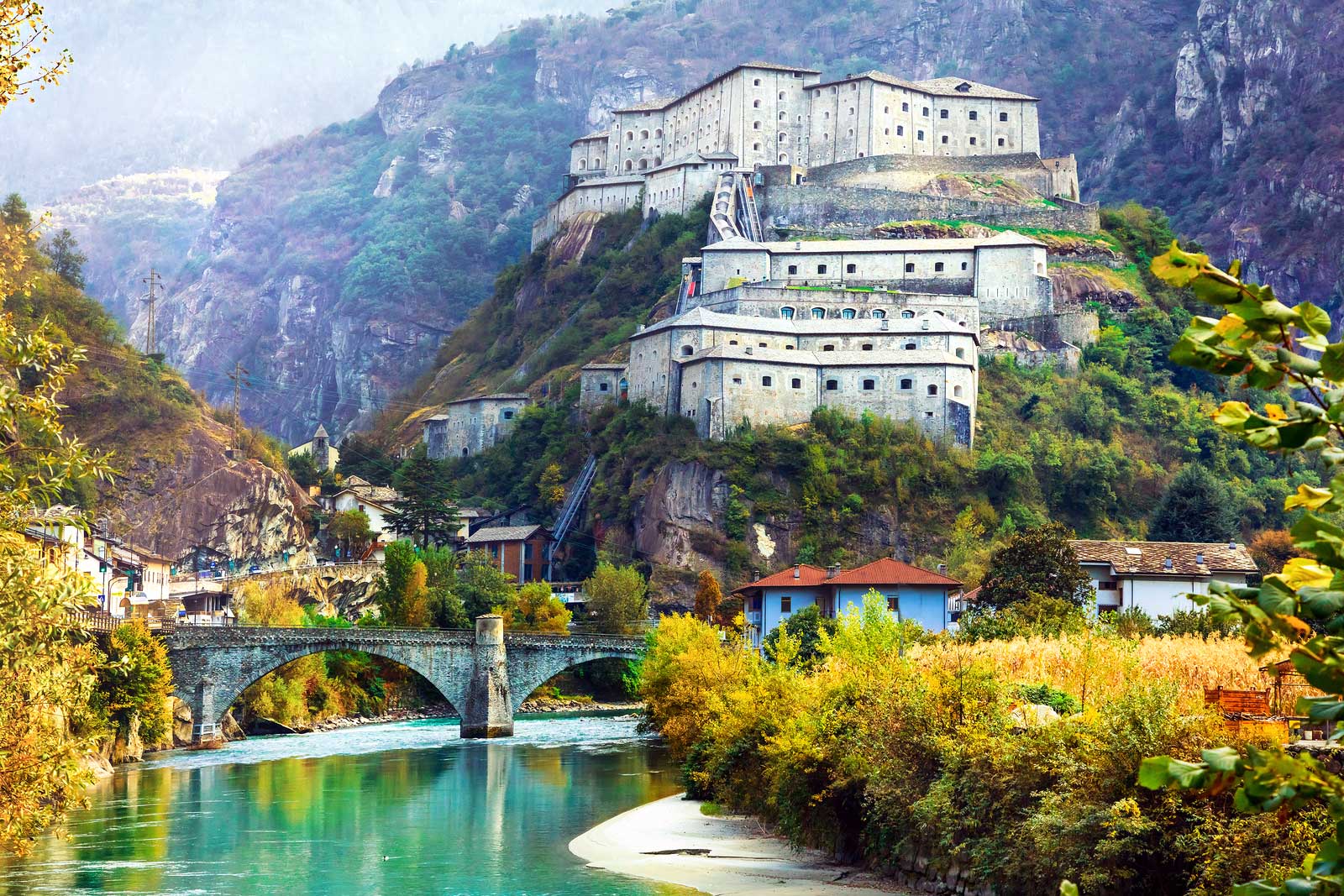
The Lower Valley
Almost entirely red wines, especially Nebbiolo. Concentrated on the subzones of Donnas and Arnad-Montjovet.
Central Valley
Think red and white wines, especially Petit Rouge, Petite Arvine and Fumin. Valle d’Aosta’s most diverse viticultural area is centered on the city of Aosta and includes the subzones of Chambave, Nus, Torrette and Enfer d’Arvier.
Upper Valley
Primarily white wines, especially Prié Blanc, one of Italy’s most enduring grapes (more on that later). Includes the subzone Blanc de Morgex et de la Salle.
Wines of Amalgamation
These wines cannot be easily separated from Valle d’Aosta’s unique culture, which is a blend of Italian and French. In this way, the region is similar to other great cross-cultural wine areas like Alto Adige and Alsace. The regional identity is neither Italian nor French, even though Italian is the day-to-day language and many surnames are French.
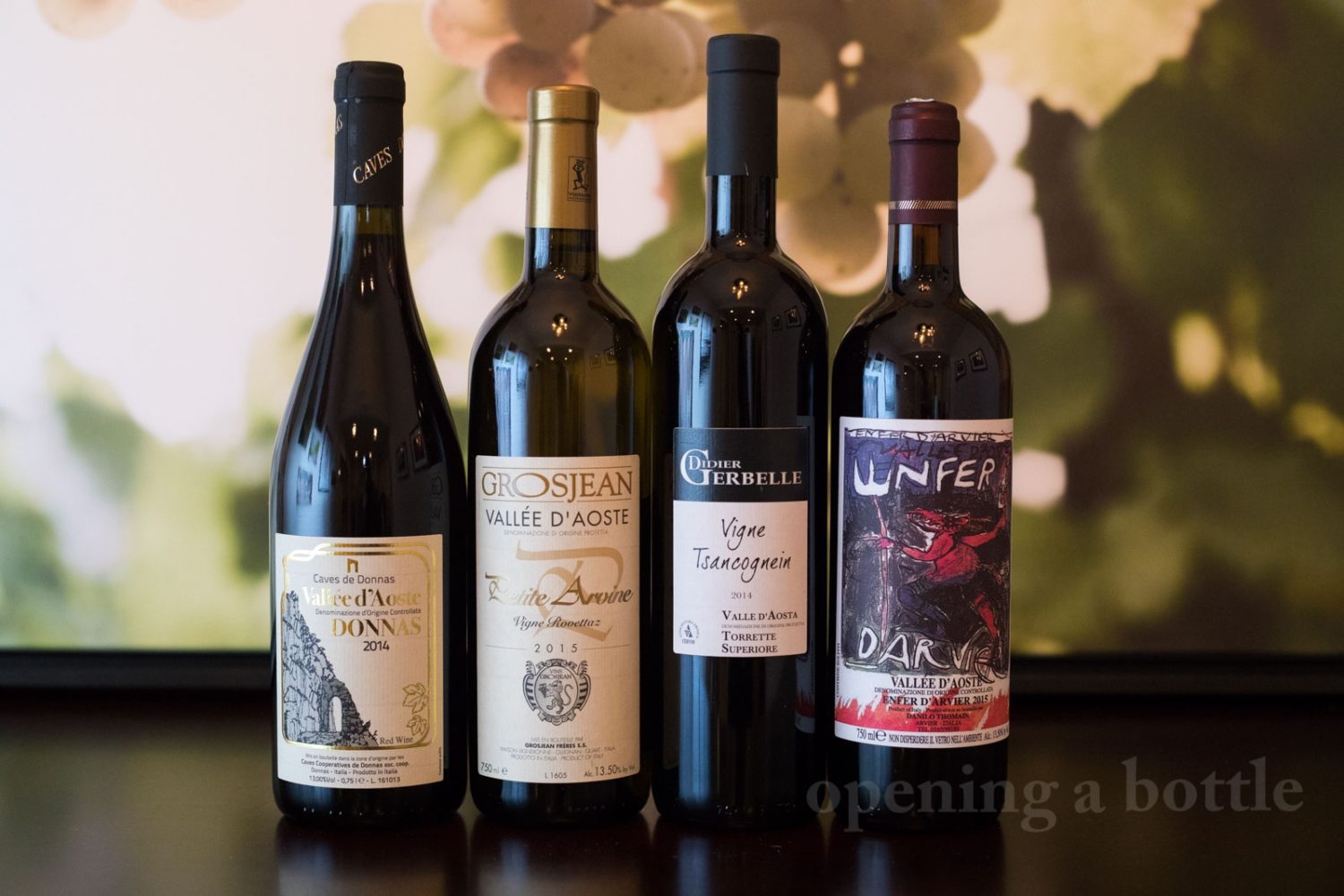
Just as amalgamated is the region’s geology, which is composed on metamorphic and sedimentary rock on the slopes, and the gravelly leftovers of glaciers and rivers — known as moraine and alluvial soils — in the valley bottom. I have always loved mountain wines, but the more I dive into geology in my wine studies, the more I realize this preference has less to do with a bias for mountainous landscapes. These soils, which are common in the Alps, are poor in nutrients and terrible at retaining water, which may sound bad for most farmers, but for winegrowers, it is a boon. Vines that struggle under such conditions can yield grapes of extreme character. Add to this a volatile continental climate with heavy alpine influences from the mountaintops, and you end up with wines that express a lot of tension.
Care to see some examples? What I have been able to find (completely via online shopping) includes five wines from five producers. Four are labeled by subzone, placing an emphasis on terroir (e.g. Valle d’Aosta DOC Donnas) and one is labeled with an emphasis on grape (e.g. Valle d’Aosta DOC Petite Arvine).
Despite these differences, all of these wines belong to the same appellation. Valle d’Aosta DOC may be small in volume compared to the rest of Italy, but it strikes me as one of Italy’s most diverse.
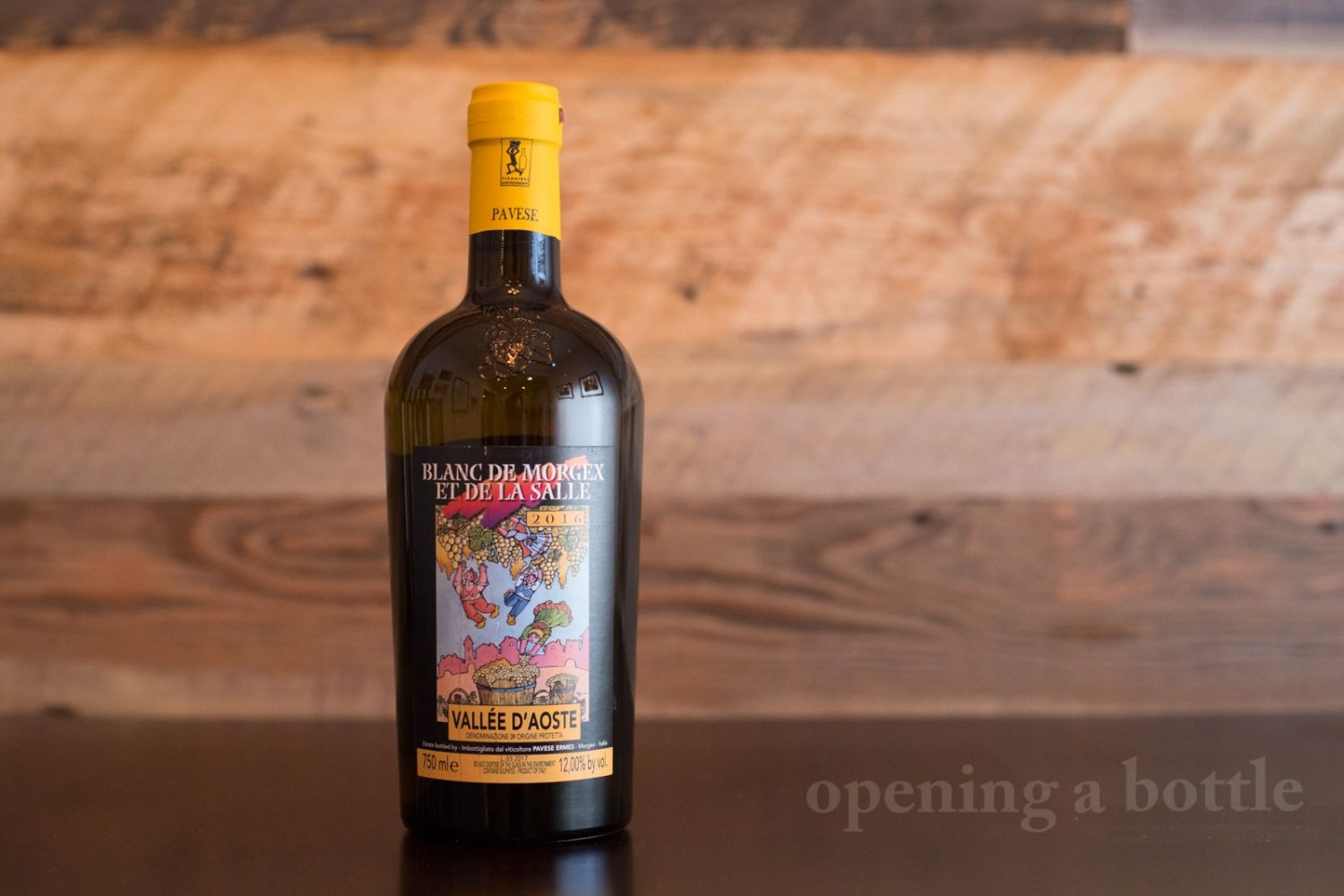
2016 Pavese Ermes Valle d’Aosta DOC Blanc de Morgex et de La Salle
Tasting notes: Think mountain Pinot Grigio with a nicer texture. The wine’s aromas are reminiscent of peaches, sharp lemon and a little brine. (★★★★ 1/4)
Why should you buy this wine? The subzone of Blanc de Morgex et de la Salle fascinates me. Way up at the top of the valley — with Mont Blanc leering over the land like an icy curmudgeon — you’ll find some of Europe’s highest altitude vines. It is so inhospitable up here that the vine pest phylloxera — which destroyed almost all of Europe’s native vines in the late 1800s and early 1900s — cannot survive. The rootstock up here is just as it was centuries ago.
As if these wines don’t seem improbable enough, the grapes have to be trained on three-foot-high pergola trellises out of necessity. To fully ripen, the grape clusters need to be protected from the high-altitude sun by a leaf canopy, yet low enough to pick up as much warmth radiating off the stony ground. (Oh, to be a chiropractor in Morgex during harvest season).
Need another reason to buy this wine: the stubby bottle. This wine could not be more of a conversation piece.
Find this wine
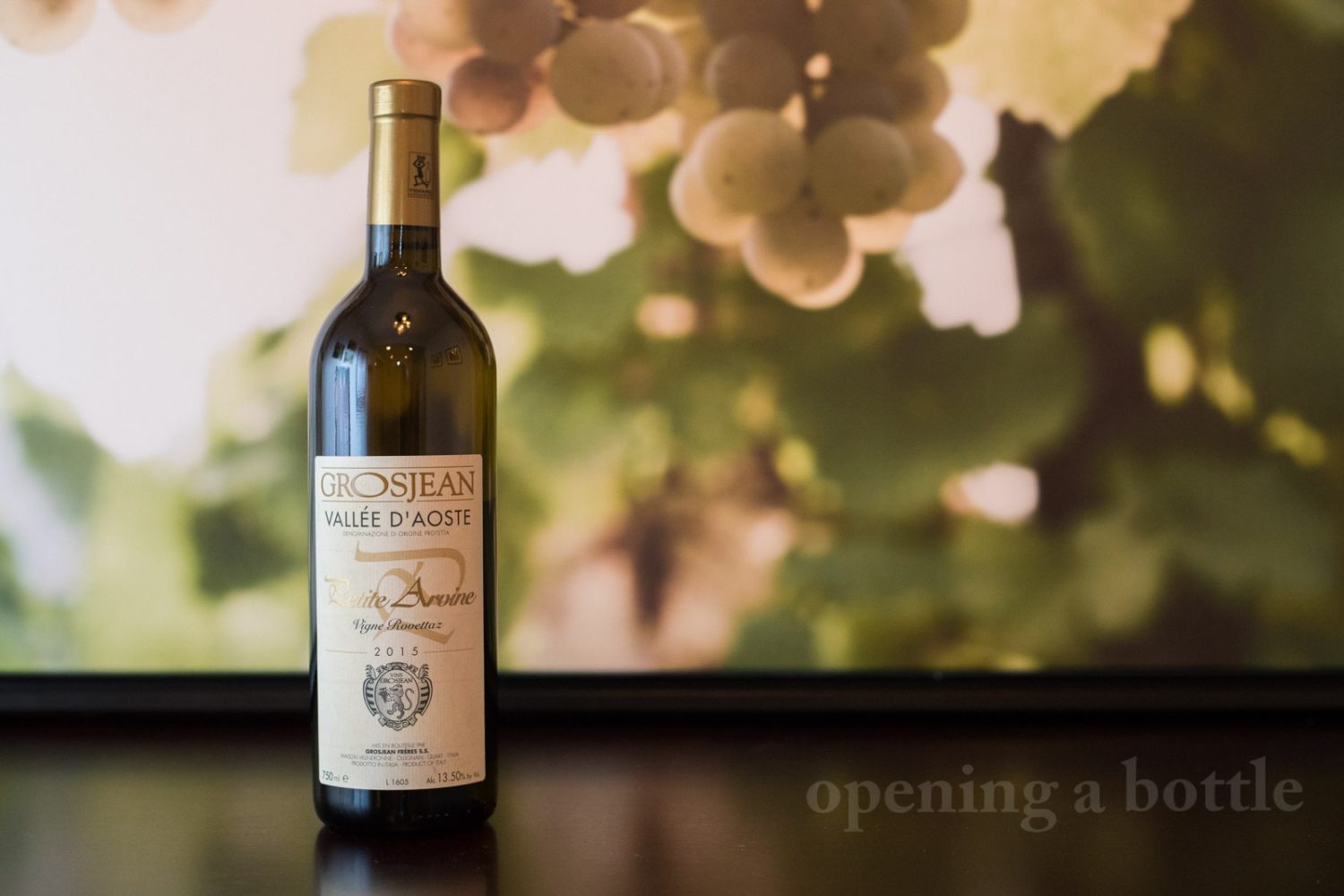
2015 Grosjean Fréres “Vigna Rovettaz” Valle d’Aosta DOC Petite Arvine
Tasting notes: Take orange pith, honey-roasted almonds and hawthorne flowers. Put them in a blender. Pulse. Inhale. It’s like that. (★★★★ 1/4)
Why should you buy this wine? There is great modesty in the flavors of Petite Arvine despite the grape’s tendency for extremes in acidity, extract and alcohol. On it’s own, the sharpness of the acidity can be a bit much, but I found this wine to be thoroughly enjoyable once it had a playdate for dinner. We partnered it with pork chops and apples one night, creamy zucchini pasta the next. Think of a toned-down Viognier, and you’re getting close to the experience.
Find this wine
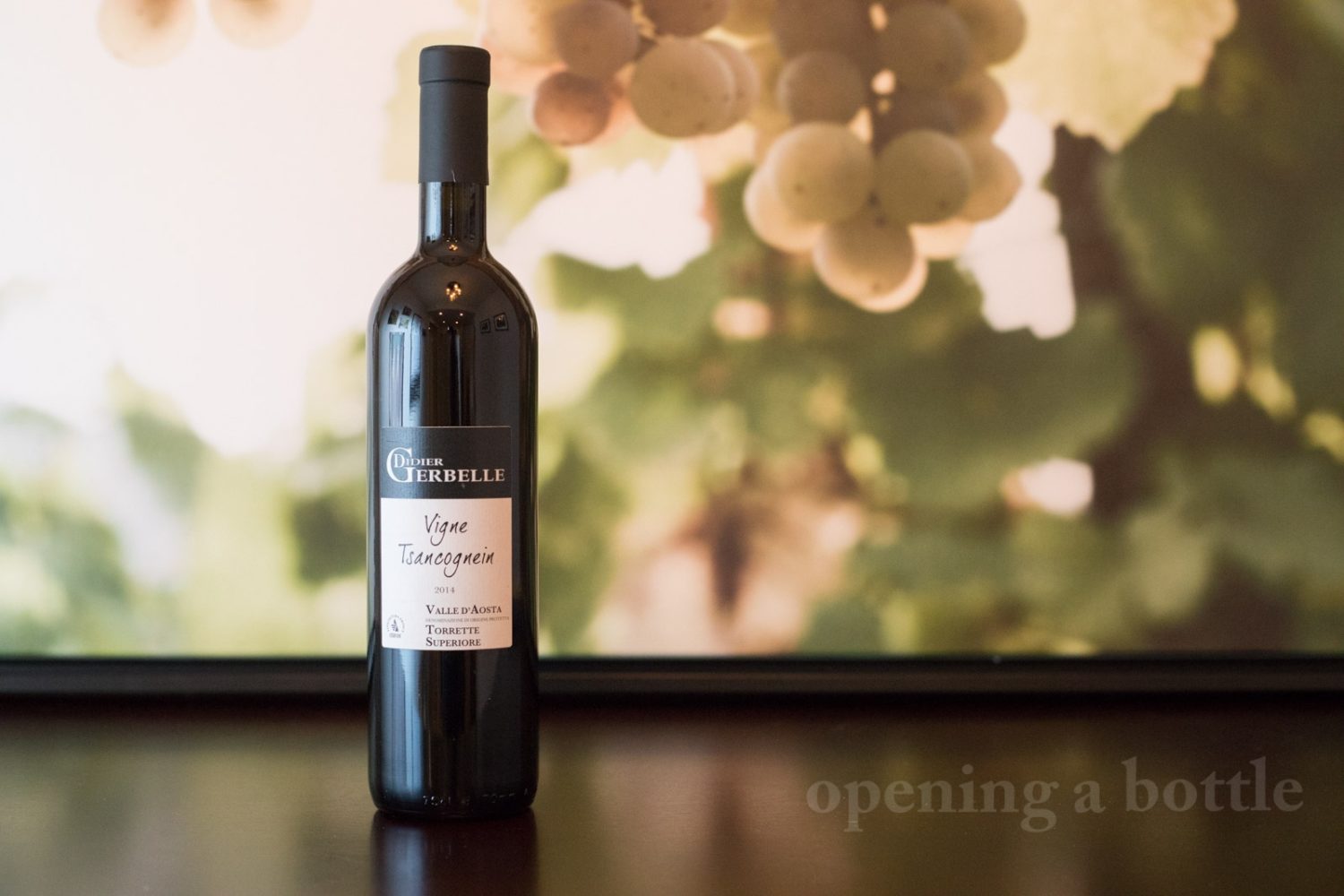
2014 Didier Gerbelle “Vigne Tsancognein” Valle d’Aosta DOC Torrette Superiore
Tasting notes: Brought to mind tart pie cherries, almond extract, baking spice and decaying autumn leaves on the nose. Low in tannin, medium on acidity, but no pushover. A beautiful red wine that wants to be noticed. (★★★★ 3/4)
Why should you buy this wine? Imagine exiting the freeway and getting lost on a country road, eventually finding yourself at a cherry stand in some tucked-away valley where they speak a different language. That’s what this kirschy, tart yet faintly sweet red wine is like, and the label accurately demonstrates the hodge-podge of culture that is Valle d’Aosta. The winemaker’s name? Clearly French. Superiore? Clearly Italian. Vigne Tsancognein? God, I just don’t know. Sounds Japanese-Yiddish-German or something (the name refers to the vineyard where the grapes came from in the town of Aymavilles).
I loved it. It reminded me of Germany’s Dornfelder wines in tone, but with more guts and personality. Torrette wines are a majority Petite Rouge, Valle d’Aosta’s most widely planted grape, although a few other grapes are permitted in the blend. Here, Fumin, Cornalin and Prié Rouge round it out. This is a perfect wine for the first cold rain of autumn. Light a fire and eat nothing but cheese for the night.
Find this wine
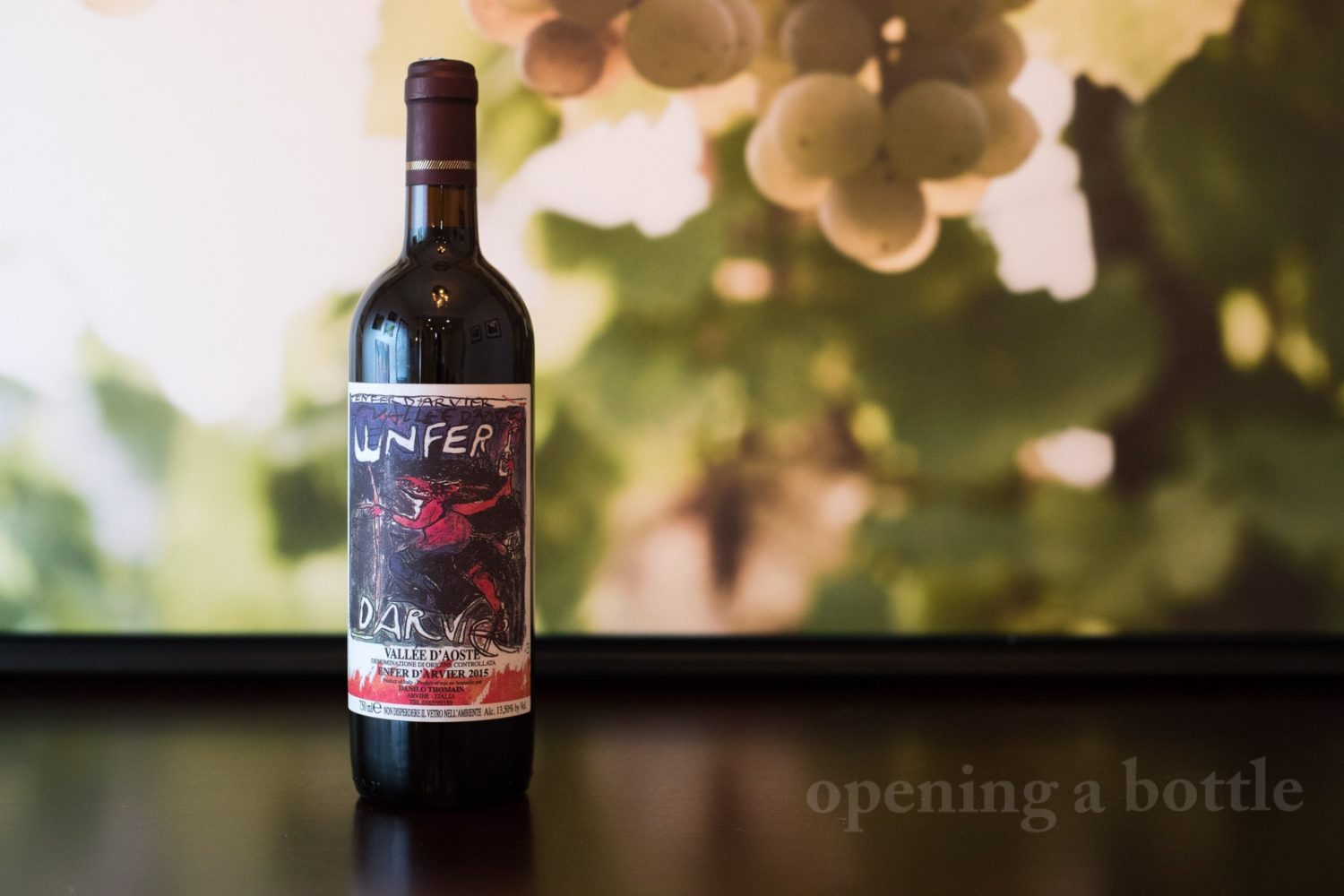
2015 Danilo Thomain Valle d’Aosta DOC Enfer d’Arvier
Tasting notes: A sprightlier rendition of Torrette’s Petite Rouge blend, this wine suggests red currants, black cherries, kirsch and rose petals on the nose with amazing energy on the palate. (★★★★ 3/4)
Why should you buy this wine? Like the Blanc de Morgex et de La Salle listed above, this wine is a conversation piece. For one, Satan will be joining you for dinner and he appears to be dancing. This delicious wine comes from the subzone of Enfer d’Arvier — a scallop-shelled hillside that traps the sun’s heat, right where the Dora Baltea bends from a southbound flow off Mont Blanc to an easterly flow toward Aosta. It’s a place of dynamic convergence, but the winegrowers will tell you it is simply hell to work this slope. Enfer in French is inferno, which means we can add Enfer d’Arvier to our list of vineyard areas that summon the hot underworld (see also Valtellina Superiore Inferno, Alsace’s Grand Cru Brand, etc.).
Enfer d’Arvier is a spectacular sight to behold from what I can tell, and its tiny: a mere 5.85 hectares. Backbreaking work is required just to make this wine, so raise a glass to the region’s winegrowers. An excellent wine for après ski, sausages and raclette.
Find this wine
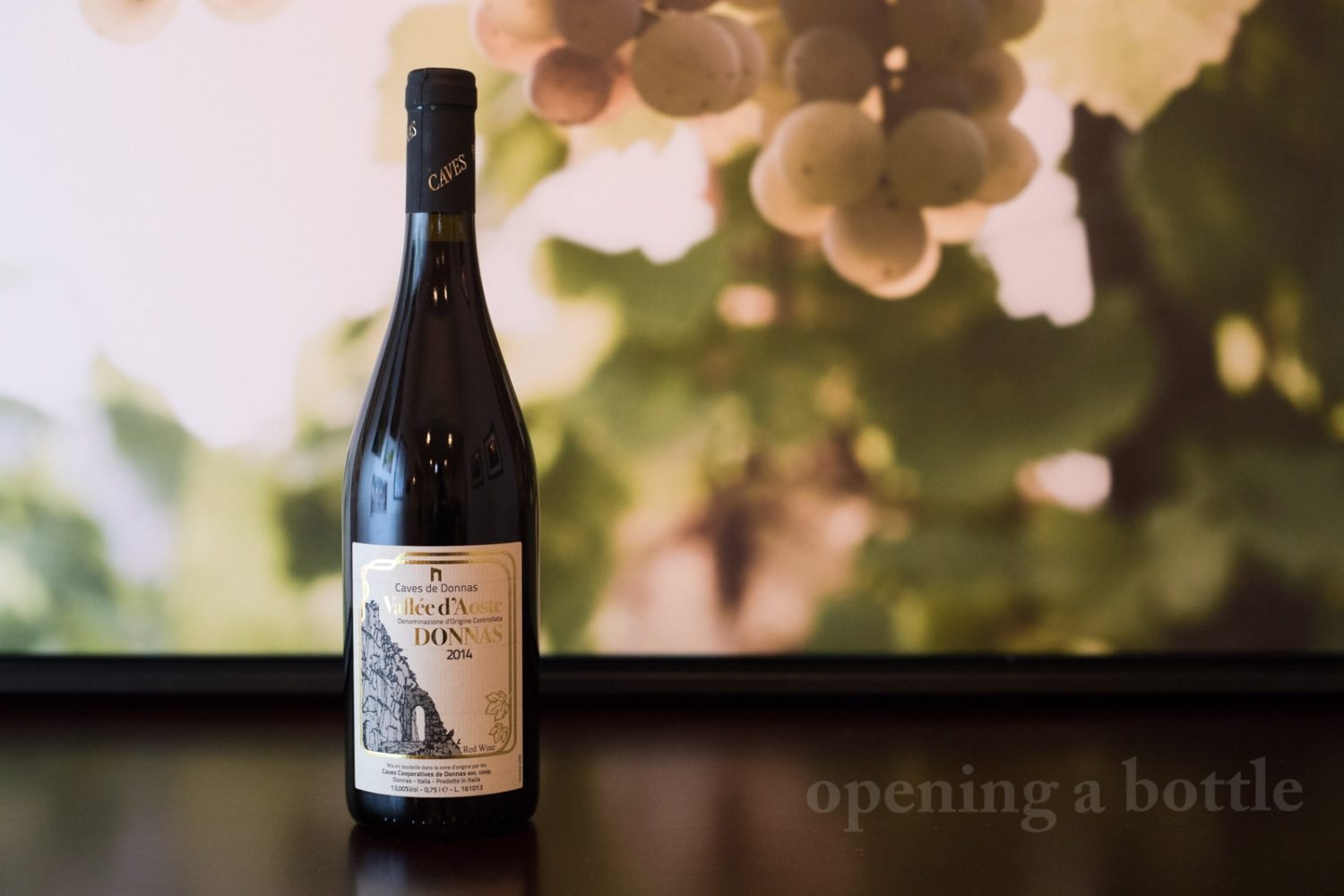
2014 Caves de Donnas Valle d’Aosta Donnas DOC
Tasting notes: This is Nebbiolo. Very sexy Nebbiolo, bringing to mind a mix of dried roses, crisp maroon cherries, peppercorns, roasted game and a faint hit of hickory smoke. Tannins? They’re there, but nothing like the domineering chest-thumpers you get further south in Barolo. This is mountain Nebb at its finest. (★★★★★)
Why should you buy this wine? As the Dora Baltea River exits the mountains, the surrounding hillsides on the southfacing slopes are carved into spectacular terraces. This is Donnas, a smaller version of Lombardy’s Valtellina, and home to perhaps my favorite category of Italian wine: Mountain Nebbiolo. These wines convey a true sense of place bearing those thorny, earthy, floral notes of Nebbiolo, but the softness and grace of fine Pinot Noir. I often smell rainstorm in these wines — that expansive smell of wet rocks and asphalt after a summer storm — which I like to think comes from some cosmic interaction of Nebbiolo vines in granitic soil. Valtellina Superiore often expresses a similar note.
Best news of the day: this wine costs $20. (Shhh. Don’t tell anyone. Let’s keep it to ourselves.)
Find this wine

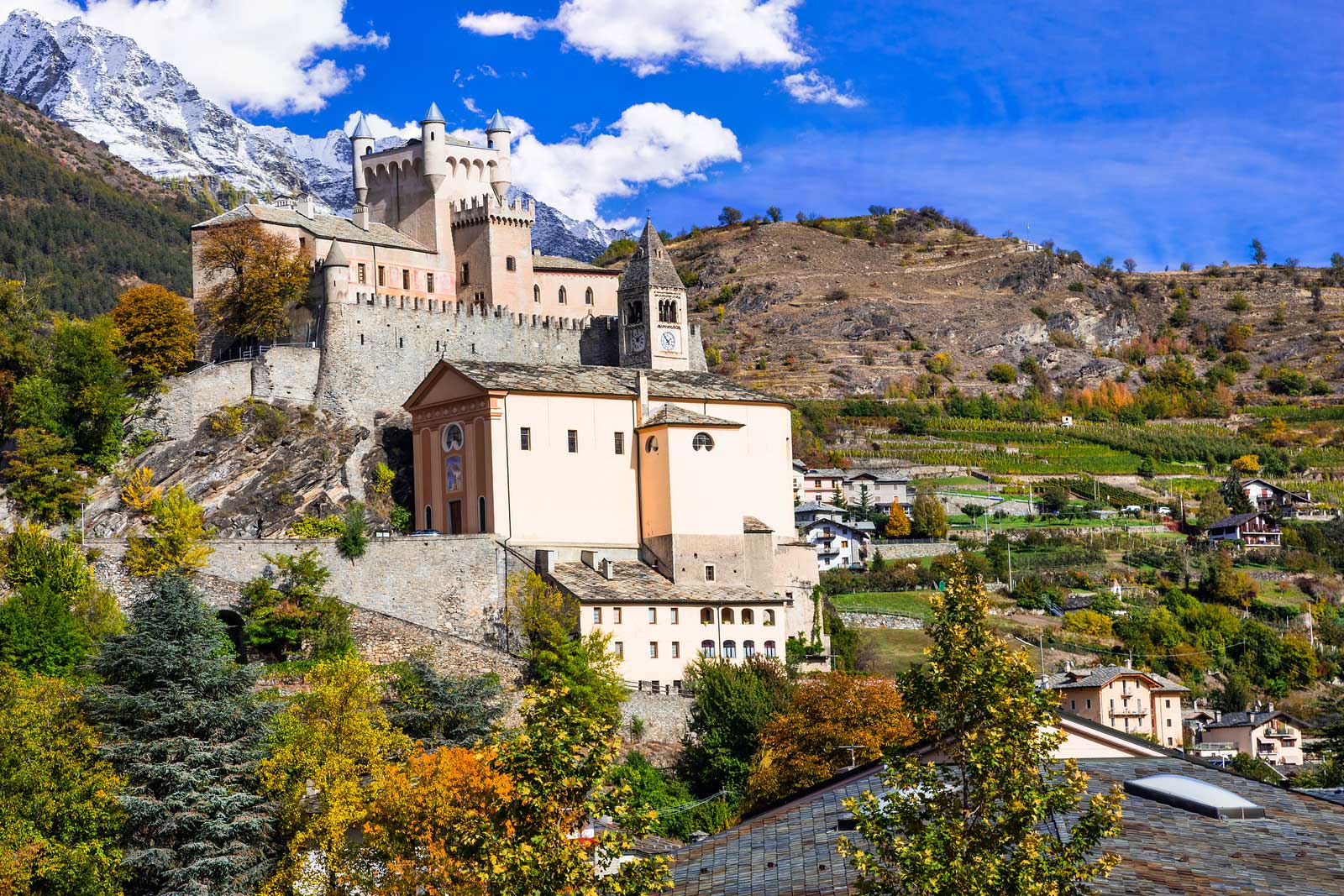
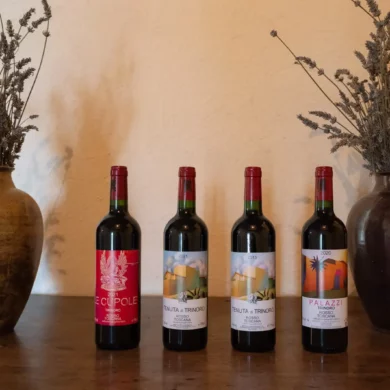
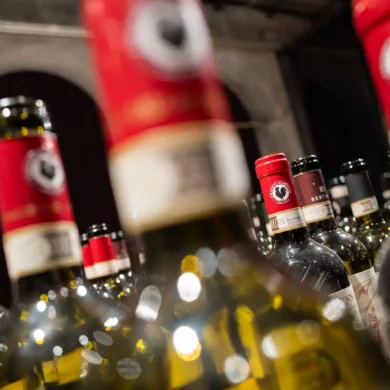
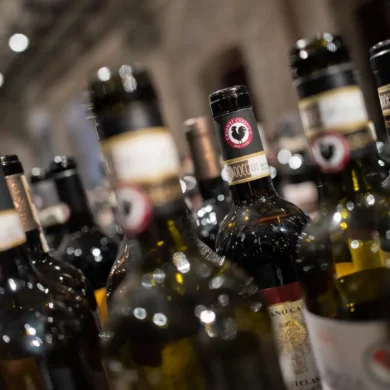
I live n live Valle d Aosta wines fromitaly